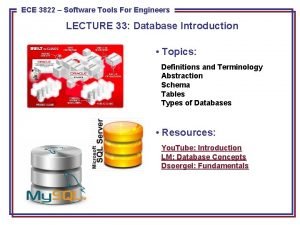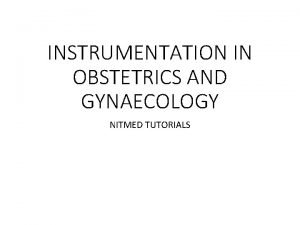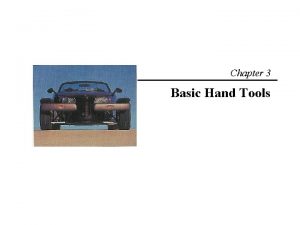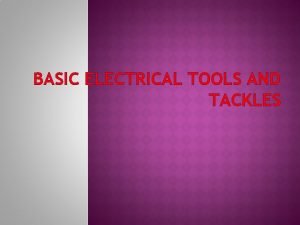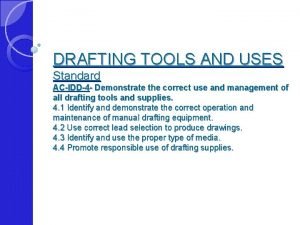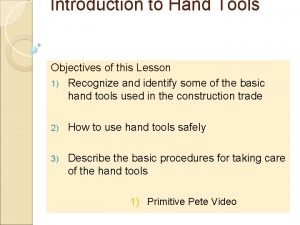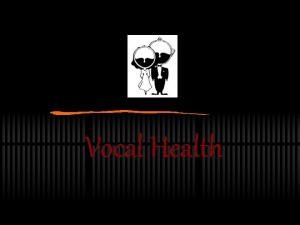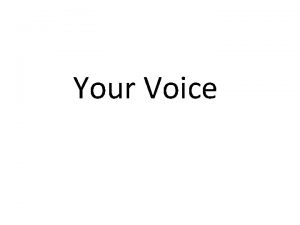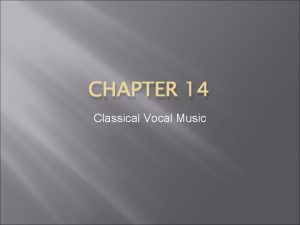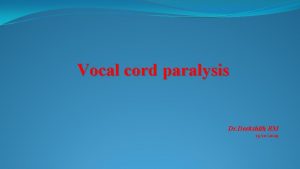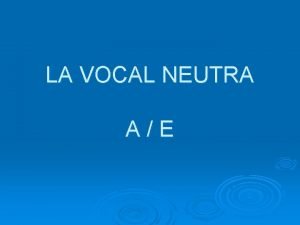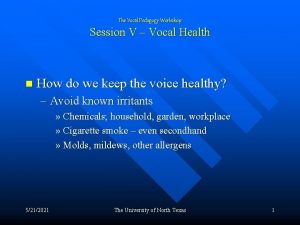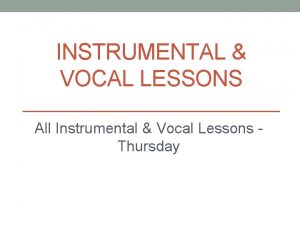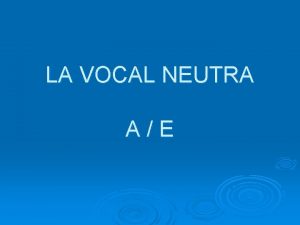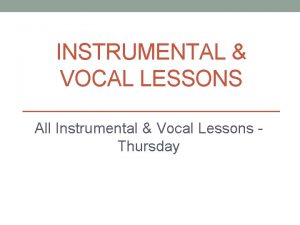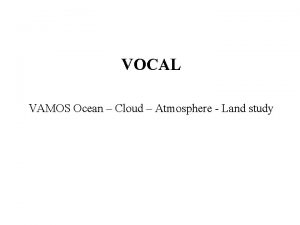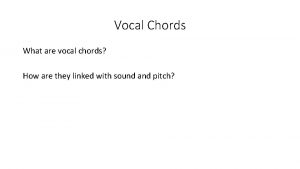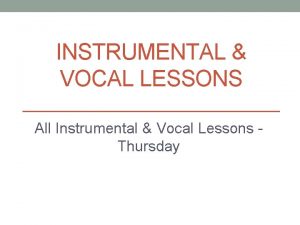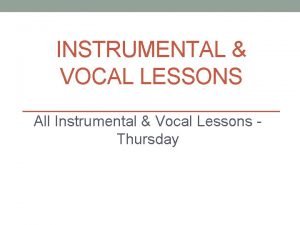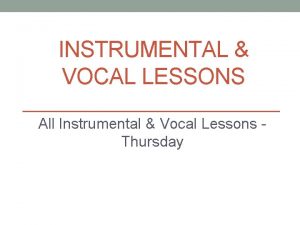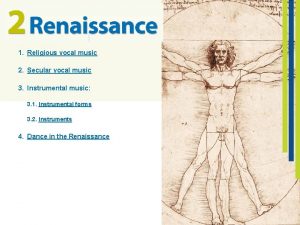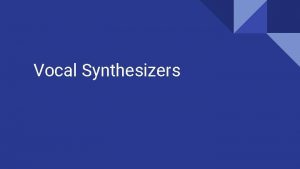Your Vocal Instrument The actor uses two tools
























- Slides: 24

Your Vocal Instrument

The actor uses two tools! l. Body l. Voice

How the voice works l Speech is distinctly a human characteristic l Speech - mechanism is composed of various parts of our body which have other uses.

Various Parts: These uses are actually more important to our physical survival than speech. l 1. 2. 3. Breathing Diaphragm Lungs Nasal Passage Eating and Swallowing Teeth Lips Tongue

l Speech is called an Overlaid Function: - The use of our lips, teeth, lungs, and so on for speech that is laid over their primary functions.

Four processes of speech l 1. 2. 3. 4. There are four steps that are involved in the production of speech: Respiration Phonation Resonation Articulation

Respiration l Or breathing that is basically the process by which air is taken into the lungs so that our blood can receive the oxygen we need to survive.

How breathing works l Our lungs rest inside our chest cavity or thorax. l It is surrounded by our rib cage and bounded at the bottom by the diaphragm. l Air is drawn into the lungs by increasing the size of the cavity, which reduces the relative air pressure inside thorax and cause air from outside to rush in until the pressure is equalized.

There are three ways to increase the chest cavity l The clavicles *(collar bone) Can be elevated, which usually causes a corresponding elevation of the shoulders l The rib cage * Can be expanded, like a loud yell l Diaphragm * Can be contracted, forcing the abdominal organs downward and outward

Actors need a large supply of air for making long speeches Clavicular breathing gives only a minimal amount of air l Rid-Cage breathing is more efficient because the rib cage can be expanded more then the clavicles l Breathing from your diaphragm draws a large quantity of air deep into the lungs This type of breathing enables an actor to make longer speeches without gasping breathing allows the for breath l

Phonation l Making a sound. l Sound is created by vibrations when air is taken into the lungs and pushed our through the bronchial tubes and trachea. l As it passes through the larynx (or voice box) the vocal cords are brought close enough together that the passing stream air causes them to vibrate.

Resonation l l 1. 2. 3. Sound created needs to be made louder and stronger This function is served by three parts: Pharynx Oral cavity Nasal cavity

l Pharynx Is the large opening area at the back of your mouth l Oral cavity • Is the mouth l Nasal cavity • Is the air passage from the pharynx to the nose •

Articulation l Breaking the sound into meaningful units and patterns. l There are seven articulators, tools that help us break sound created into syllables and words.

7 articulators l Teeth l Lips l Tongue l Lower jaw l Hard palate l Soft palate l Epiglottis

l The 7 articulators are used in various combinations. l Example, the tongue and the lower jaw are responsible for most of the vowel sounds, such as in words like beet, bet, and bat. l The lips form the sound in letters such as b and p. l The teeth and the lower lip combine form the letters f and v. l The tongue and teeth create th sound.

The four properties of tone l 1. 2. 3. 4. We can change the sound of our voice in four different ways: Strength Pitch Time Quality

Strength l The property of voice commonly known as loudness or volume l How much sound is produced is controlled by the way the amount of air we push past our vocal cords. l Keep in mind that we want strength without strain, relax the muscles in your throat and properly use your diaphragm in order to keep from getting hoarse.

Pitch l The pitch of sound is determined by the speed of the vibration. l The faster the vibration the higher the pitch. l The idea for an actor to work on pitch range is so they have an way to be expressive and not monotone!

Inflection l Describes the variation is pitch during speech. l A sentence or a word can have a rising inflection, a falling inflection, and a circumflex inflection. l Pitch ranges from high to medium to low.

Time l Two parts of out speech that are timed, they are the sounds and the silences (which are the spaces between the sounds).

Quality The change in vocal tone. Six Basic Qualities: 1. Normal 2. Nasal 3. Oral 4. Guttural 5. Aspirate 6. Orotund l

Accents and Dialects l Accent- the way certain words are pronounced. l Dialect- is the way a language is spoken, such as the use of slang, lingo, and particular jargon. There can be many different dialects within a language.

Elements of accents and dialects 5 elements 1. Vowel changes 2. Consonant changes 3. Inflection patterns 4. Stress patterns 5. Word choices
 False and true vocal cords
False and true vocal cords What are the two vocal singing styles in pakistan
What are the two vocal singing styles in pakistan Tools of an actor or actress
Tools of an actor or actress Superlative tasty
Superlative tasty Example of null type instrument
Example of null type instrument Ovum forceps parts
Ovum forceps parts Give us your hungry your tired your poor
Give us your hungry your tired your poor Basic hand tools list
Basic hand tools list Examples of testing tools in carpentry
Examples of testing tools in carpentry Basic electrical hand tools
Basic electrical hand tools 10 drafting tools
10 drafting tools Tools and materials in making simple electrical gadgets
Tools and materials in making simple electrical gadgets The longer the ratchet handle, the better the _____.
The longer the ratchet handle, the better the _____. A vertical & long flute of the b'laan
A vertical & long flute of the b'laan Cambodian instrument with two big drums similar to japanese
Cambodian instrument with two big drums similar to japanese Sewing tools measuring tools
Sewing tools measuring tools Hát kết hợp bộ gõ cơ thể
Hát kết hợp bộ gõ cơ thể Slidetodoc
Slidetodoc Bổ thể
Bổ thể Tỉ lệ cơ thể trẻ em
Tỉ lệ cơ thể trẻ em Chó sói
Chó sói Chụp phim tư thế worms-breton
Chụp phim tư thế worms-breton Chúa sống lại
Chúa sống lại Môn thể thao bắt đầu bằng từ đua
Môn thể thao bắt đầu bằng từ đua Thế nào là hệ số cao nhất
Thế nào là hệ số cao nhất


